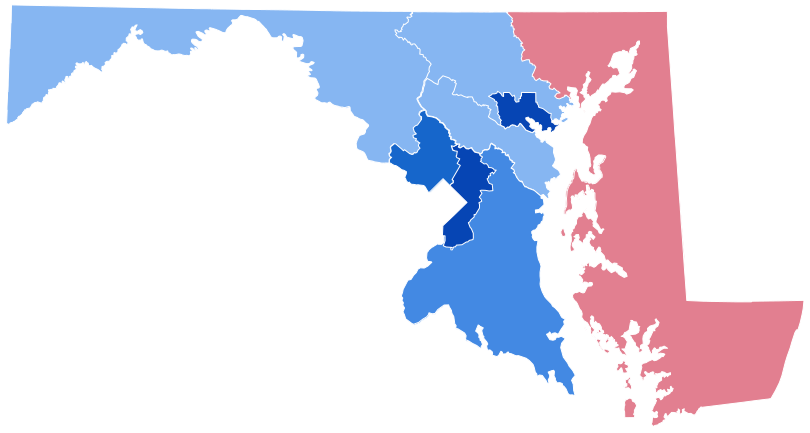Managing Communicable Diseases

U.S. Supreme Court building at dusk. Photo: Joe Ravi, via Wikimedia Commons
On February 3, 2021, the federal Centers for Disease Control and Prevention published a regulation requiring that masks be worn in airports, train stations, and other transportation hubs as well as on airplanes, buses, trains, and most other public conveyances in the United States. This was quickly labeled the “mask mandate,” and failure to comply could result in civil and criminal penalties, including removal from the conveyance. (See Requirement for Persons to Wear Masks While on Conveyances and at Transportation Hubs, 86 Fed. Reg. 8025 (Feb. 3, 2021))
The mask mandate was first promulgated following the fall and winter of 2020-21, which brought a spike in new covid-19 infections due in part to emerging variants of the virus, some of which were demonstrably more severe than the original strain and more easily transmissible.
The agency declared that scientific data suggested that masks are “one of the most effective strategies available for reducing covid-19 transmission.” Spending significant time in a confined space while traveling with others of unknown health or vaccination status posed obvious additional risks warranting the use of masks for the better protection of all, in the opinion of the CDC.
The original mask mandate has been extended and is presently set to expire early in May unless further extended.
In July 2021, two individuals and an organization called the Health Freedom Defense Fund filed a case in federal district court in Tampa to challenge the mask mandate. The two individuals alleged that they fly less often because for them wearing a mask “increases anxiety” and “constricts breathing.” The Health Freedom Defense Fund is a non-profit organization that opposes “laws and regulations that force individuals to submit to the administration of medical products, procedures, and devices against their will.” The case was randomly assigned to Judge Kathryn Kimball Mizelle.
At the age of 33, Judge Mizelle was President Donald Trump's youngest judicial appointment. Her nomination was confirmed by a lame-duck Republican majority after a party-line vote of 49–41 on November 18, 2020, after Trump had lost reelection. Prior to her confirmation, the American Bar Association rated Mizelle "not qualified" to serve as a federal trial court judge. Her integrity and demeanor were not in question, said the ABA, “but these attributes simply do not compensate for the short time she has actually practiced law and her lack of meaningful trial experience.”
On April 18, 2022, following briefs and argument, Judge Mizelle rendered a 59-page opinion vacating the CDC’s mask mandate regulation because it “exceeds the CDC's statutory authority.” Although there were press reports of people cheering and ripping off their masks as airline pilots in midflight announced the ruling, public health officials called the impact of this decision “unimaginable” because Judge Mizelle’s interpretation of the law could “permanently diminish the government’s ability to respond to public health emergencies.” However, even if Judge Mizelle’s decision appeared to catch many by surprise, it was consistent with an interpretation of the same law last year by a conservative Supreme Court majority seemingly determined to shrink the ability of federal governmental agencies to deal with new problems.
The statutory provision relied upon by the CDC in promulgating the mask mandate is §361(a) of the Public Health Service Act, created in 1944 and codified as 42 USC §264(a). The first sentence of this statute broadly authorizes the CDC “to make and enforce such regulations as are necessary to prevent the introduction, transmission, or spread of communicable diseases.” The second sentence states that “for purposes of carrying out and enforcing such regulations, the [CDC] may provide for such inspection, fumigation, disinfection, sanitation, pest extermination, destruction of animals or articles found to be so infected as to be sources of dangerous infection to human beings, and other measures, as in [its] judgment may be necessary.”
Interpretation of the meaning of this statute raises the initial question of whether the second sentence expands or contracts the broad authority granted in the first sentence. If it is to limit the scope of the first sentence, the question then becomes whether the challenged regulation fits within the actions permitted by the second sentence.
This law and the scope of the CDC’s statutory authority to regulate to prevent the transmission of covid-19 came before the U.S. Supreme Court last August in a truncated fashion colloquially known as the “shadow docket” (Alabama Association of Realtors v. Department of Health and Human Services (August 2021)). That case involved the question of whether the CDC has statutory authority to impose an eviction moratorium in regions then currently experiencing skyrocketing rates of infection by preventing the significant movement of large numbers of persons suffering from eviction.
In an unsigned “per curium” decision, the Supreme Court’s majority held that the second sentence of §264(a) narrows the broad scope of the first sentence and that the measures contained in the second sentence limit the CDC’s authority to preventing the spread of disease only by “identifying, isolating, and destroying the disease itself.” In the opinion of the majority, the downstream connection between eviction and the interstate spread of disease is “markedly different” from the “direct targeting of disease” that characterizes the measures identified in the statute.
Justices Stephen Breyer, Sonia Sotomayor, and Elena Kagan dissented, asserting that the second sentence is more “naturally read” to expand — not contract — the agency’s powers. The statute’s first sentence grants the CDC authority to design measures that, in the agency’s judgment, are essential to contain disease outbreaks. Reading the provision’s second sentence to narrow its first would undermine that purpose. As a key drafter of the act explained, “[t]he second sentence of subsection (a)” was written not to limit the broad authority contained in the first sentence, but to “expressly authorize … inspections and … other steps” the agency deems necessary. (Hearings on H.R. 3379 before the Subcommittee of the Committee on Interstate and Foreign Commerce, 78th Cong., 2d Sess., 139 (1944)) Moreover, the second sentence empowers the CDC to take such “other measures, as in [its] judgment may be necessary” in addition to the enumerated powers.
In her opinion, Judge Mizelle concedes that “at first blush,” the mask mandate appears more closely related to the powers granted in §264(a) than the eviction moratorium. However, after “rigorous statutory analysis,” she concludes that §264(a) does not authorize the CDC to issue the mask mandate. Accepting the Supreme Court’s interpretation of §264(a), Judge Mizelle determined that “the second sentence narrows the scope of the first.” As a result, in her opinion, the power to authorize the mask mandate “must be found in one of the actions enumerated in the second sentence,” providing for “inspection, fumigation, disinfection, sanitation, pest extermination, destruction, and other measures.”
The government argued that the terms “sanitation” and “other measures” should be read as “the promotion of hygiene and prevention of disease by maintenance of sanitary conditions.” However, Judge Mizelle, interpreting the second sentence in the language used by the Supreme Court majority, found that the CDC’s regulatory authority only extends to measures aimed at “identifying, isolating, and destroying the disease itself.” In her opinion, because the CDC required mask wearing as a measure that limits the spread of covid-19 but does not actively “isolate and destroy it,” the mask mandate falls outside of §264(a) and the CDC’s authority.
As of the time of this writing, the government has announced its intention to appeal Judge Mizelle’s ruling. As it stands, that ruling surely constrains the nation’s premier public health agency from enacting a variety of measures by which covid-19 and future communicable diseases may be contained beyond only those remedies designed to eliminate the disease.
John Christie was for many years a senior partner in a large Washington, D.C. law firm. He specialized in anti-trust litigation and developed a keen interest in the U.S. Supreme Court about which he lectures and writes.
Common Sense for the Eastern Shore







